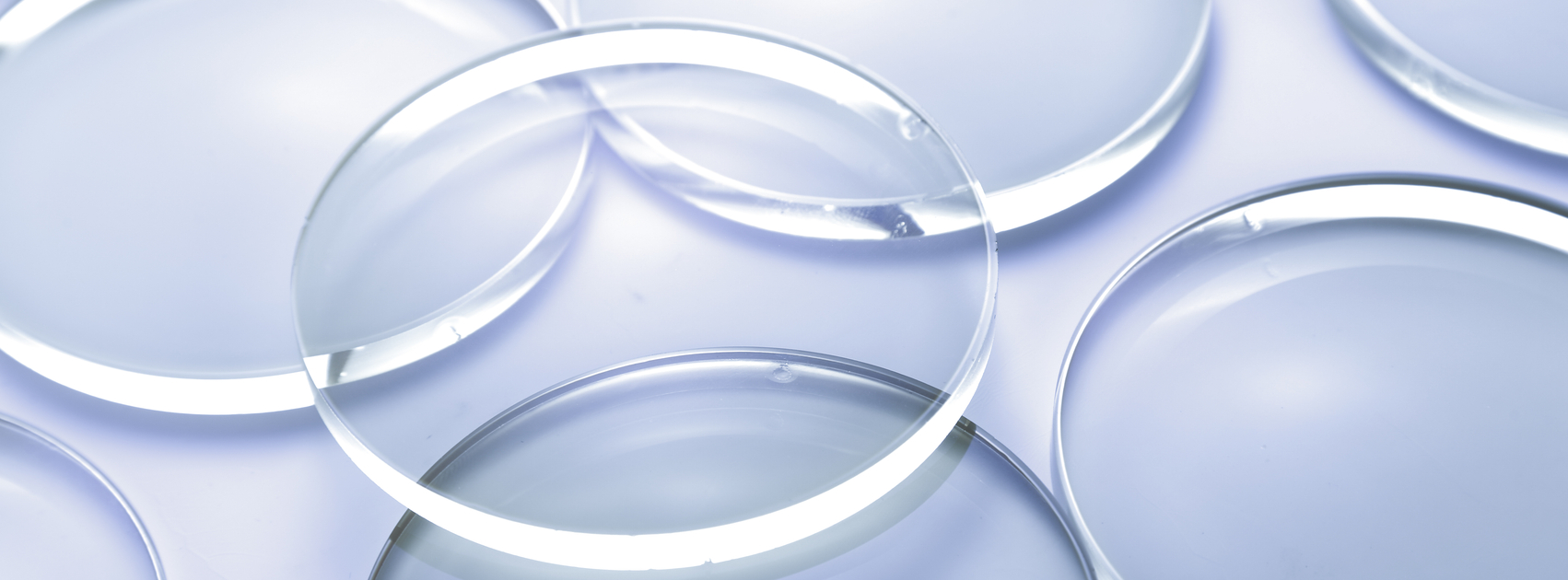Many people suffer from myopia or presbyopia, and most need vision correction. Most of the vision correction methods we use today are wearing prescription eyeglasses, the essential part of which are prescription lenses. Because of their relatively specialized knowledge, making many people unaware of prescription lenses, we will briefly learn about them today.
Ordinary single-vision lenses, simple crescent or toric lenses, usually have a front surface (convex) that is spherical and a rear surface (concave) that is spherical or toric. Most lens materials can be applied to such a lens design.
It is possible to create lenses with a flatter and thinner appearance, generally with a conical curve design, mainly an elliptical curve design. The aspheric design considers the lens's flat base arc without increasing peripheral astigmatism. The aspheric formatting can be applied to all conventional lens materials and is commonly used for medium to high refractive index resin materials, aiming to reduce the lens's thickness further.
In recent years, the application of aspheric lenses is no longer limited to highly ortho lenses. Still, lenses with low to moderate refractive power are also widely used with aspheric designs, improving the optical performance and increasing the aesthetics. Applying aspheric curves results in thinner and more aesthetically pleasing lenses without adding unacceptable aberrations, especially astigmatism at the periphery of the lens.
They are improved wearing comfort and stable and smooth lens luminosity. From spherical lenses to aspheric lenses to double aspheric lenses, in addition to being lighter and thinner, they make the wearer's vision more comfortable and the experience better.

#A. Round-top bifocal lens: commonly used round-top bifocal lens is fused with higher refractive index material as a sub-piece material. The round-top bifocal sub-piece is generally challenging to detect.
The round-top bifocal design is intended for users with a limited amount of close-use reading. The round-top bifocal is a clear bifocal lens to manufacture. Its round-top shape makes it easier to work with cylindrical lenses because the axial position does not need to be in line with the top of the sub-lens.
Despite their imperceptible appearance, round-top bifocals have two main drawbacks. First and most importantly, an area at the top of the sub-lens cannot be used because the rounded top is not wide enough for near vision, so the eye position needs to continue down the sub-lens for comfortable reading. There are better choices than this for wearers who need to do a lot of close work; secondly, there is an image jump when entering the sub-lens from the distance use area.
#B Flat-top bifocal lens: flat-top bifocals solves the main problem of the rund-top bifocal; that is, it gives up without using the top of the sub-piece, but the appearance of the sub-piece is thus more apparent. Not only is the flat-topped doublet easy to touch, but its appearance is also easier to spot.
In addition, compared with the round-top bifocal, the optical center of the flat-top bifocal lens is closer to the top of the sub-sheet, so the image jump phenomenon is reduced. However, the appearance of the flat-top bifocal could not be more aesthetically pleasing, and in the manufacturing of the cylinders, the requirements are more stringent. The top of the sub-sheet must be guaranteed to be horizontal during processing.
#C Executive bifocal: executive bifocal is a sub-piece with a distinct double-off appearance, with a large near-use visual area, and can be recommended for people who work mainly at near-sighted distances.
The main advantage of executive bifocals is that there is a tremendous reading area, and there is also no jumping because the optical center of the sub-lens is located precisely on the split line of the sub-lens. However, executive bifocals have many disadvantages: the lenses are thick, heavy, and have a hideous appearance, as well as prismatic problems. The one-line bifocal also requires meticulous processing of the prism, and the top of the sub-piece must be level.
They can provide distance, intermediate, and near vision for people with presbyopia. Trifocal lenses are also available in different designs, such as flat-top and executive trifocal lenses.
They are called progressive lenses and have multiple focal points on one lens. The design of this special lens is inspired by the shape of an elephant's trunk. By making the curvature of the front surface of the lens increase continuously from top to bottom, one can make a corresponding change in its refractive power. i.e., the refractive power increases gradually and continuously from the distal zone, located at the top of the lens, until the required near-use refraction is reached in the near-use area at the bottom of the lens. Multifocal lenses are a milestone in the history of lens development and will be the main direction of research and development by scientists and market penetration in the future.